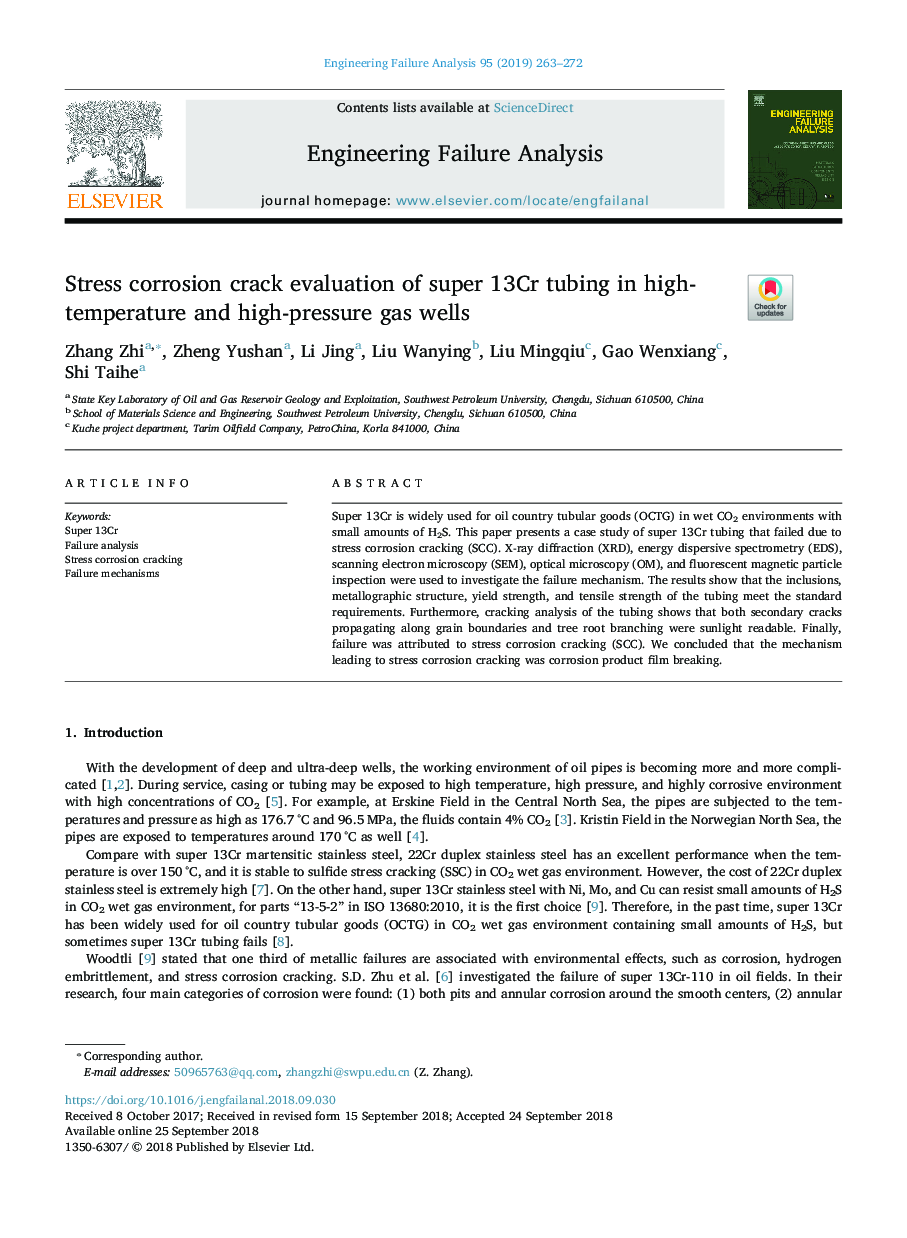| Article ID | Journal | Published Year | Pages | File Type |
|---|---|---|---|---|
| 11029917 | Engineering Failure Analysis | 2019 | 10 Pages |
Abstract
Super 13Cr is widely used for oil country tubular goods (OCTG) in wet CO2 environments with small amounts of H2S. This paper presents a case study of super 13Cr tubing that failed due to stress corrosion cracking (SCC). X-ray diffraction (XRD), energy dispersive spectrometry (EDS), scanning electron microscopy (SEM), optical microscopy (OM), and fluorescent magnetic particle inspection were used to investigate the failure mechanism. The results show that the inclusions, metallographic structure, yield strength, and tensile strength of the tubing meet the standard requirements. Furthermore, cracking analysis of the tubing shows that both secondary cracks propagating along grain boundaries and tree root branching were sunlight readable. Finally, failure was attributed to stress corrosion cracking (SCC). We concluded that the mechanism leading to stress corrosion cracking was corrosion product film breaking.
Related Topics
Physical Sciences and Engineering
Engineering
Industrial and Manufacturing Engineering
Authors
Zhang Zhi, Zheng Yushan, Li Jing, Liu Wanying, Liu Mingqiu, Gao Wenxiang, Shi Taihe,
